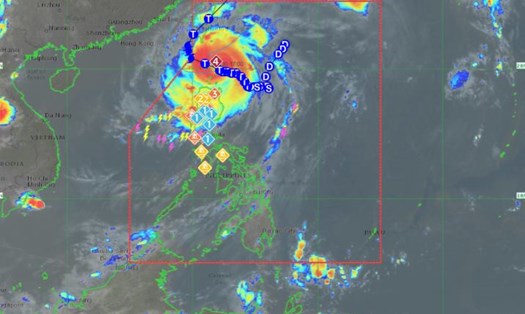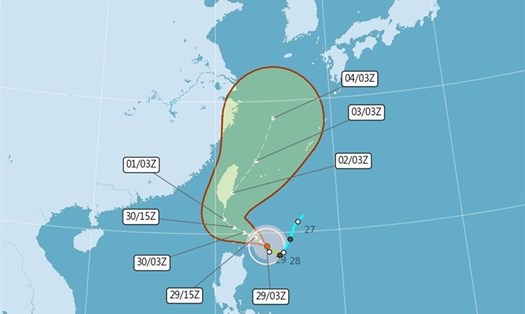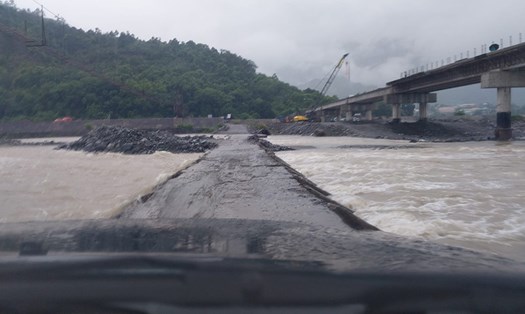On the morning of September 30 (local time), the Taiwan Meteorological Administration (CWA) issued a warning about Typhoon Krathon, which is currently located about 220 km southeast of Taiwan's southernmost point, Cape Eluanbi.
Gene Huang, a weather forecaster at the CWA, added that the storm's impact was growing, pointing to threats to southwestern Taiwan. It is rare for such a powerful storm to directly hit the island's western plains.
The storm is moving west-northwest at 9 km/h, with sustained winds of 162 km/h and gusts of up to 198 km/h.

Mountainous areas such as Taoyuan, Maolin, Namasia and Liugui in Kaohsiung City are on high alert for possible landslides.
521 people from mountainous areas in Kaohsiung have been evacuated amid landslide warnings and preparations for severe weather conditions. Sandbags and portable pumps have been deployed across the city to deal with flooding.
On the evening of September 30, authorities in Chiayi, Tainan, Kaohsiung and Pingtung counties in southern Taiwan as well as Hualien and Taitung counties in eastern Taiwan announced the closure of schools and offices on October 1.

Earlier, in the northern Philippines, Cagayan and Batanes provinces experienced strong winds and heavy rains due to Typhoon Krathon (local name Julian). Although there were no reports of casualties, officials remained on high alert due to the great threat to human life and infrastructure.
Hundreds of Filipinos have been evacuated, schools have been closed and inter-island ferries have been suspended.
Typhoon Krathon is expected to continue moving south of Taiwan (China), with a high possibility of making landfall in Kaohsiung City.
Weather forecasters predict that Krathon will have its strongest impact between October 1 and 3, with southern and eastern Taiwan experiencing the strongest winds and rain. Residents have been warned to prepare for strong winds of up to 200 km/h, along with heavy rainfall and the risk of landslides and flooding.
If you intend to visit this area of Taiwan (China), visitors should be cautious about weather developments and monitor warnings from authorities, announcements from service providers and airlines.



